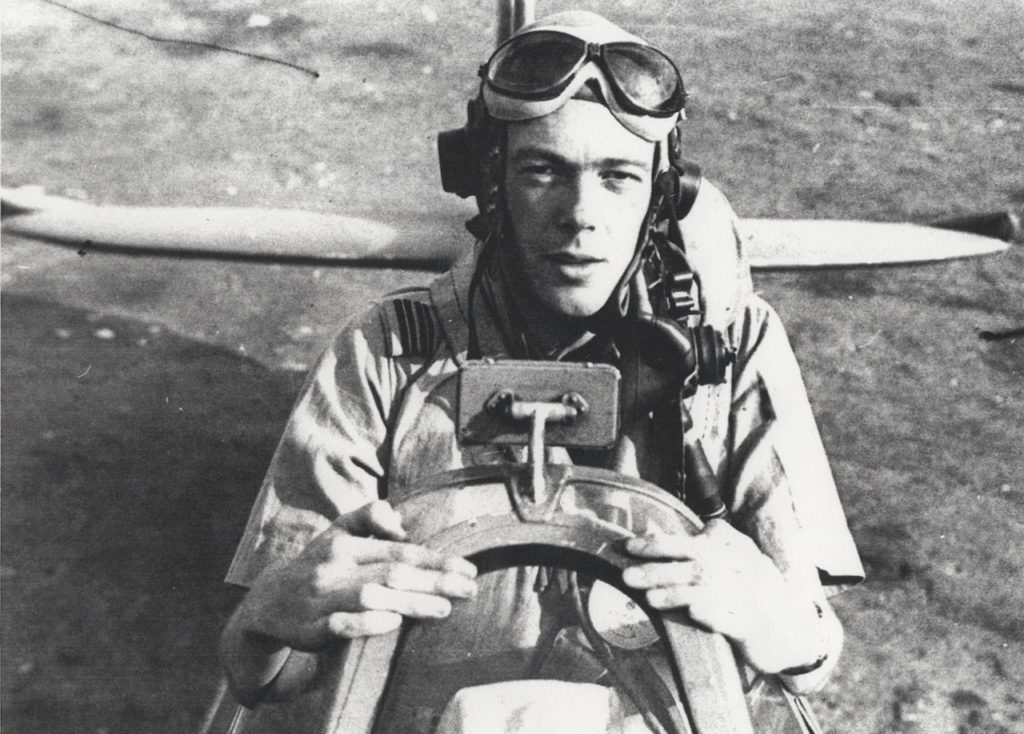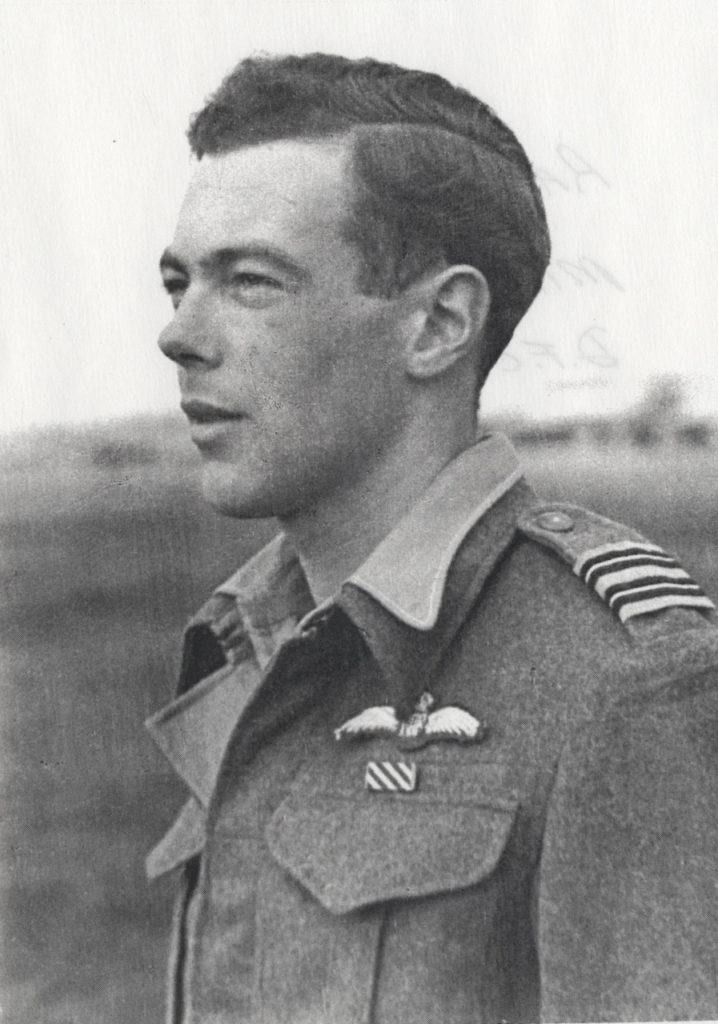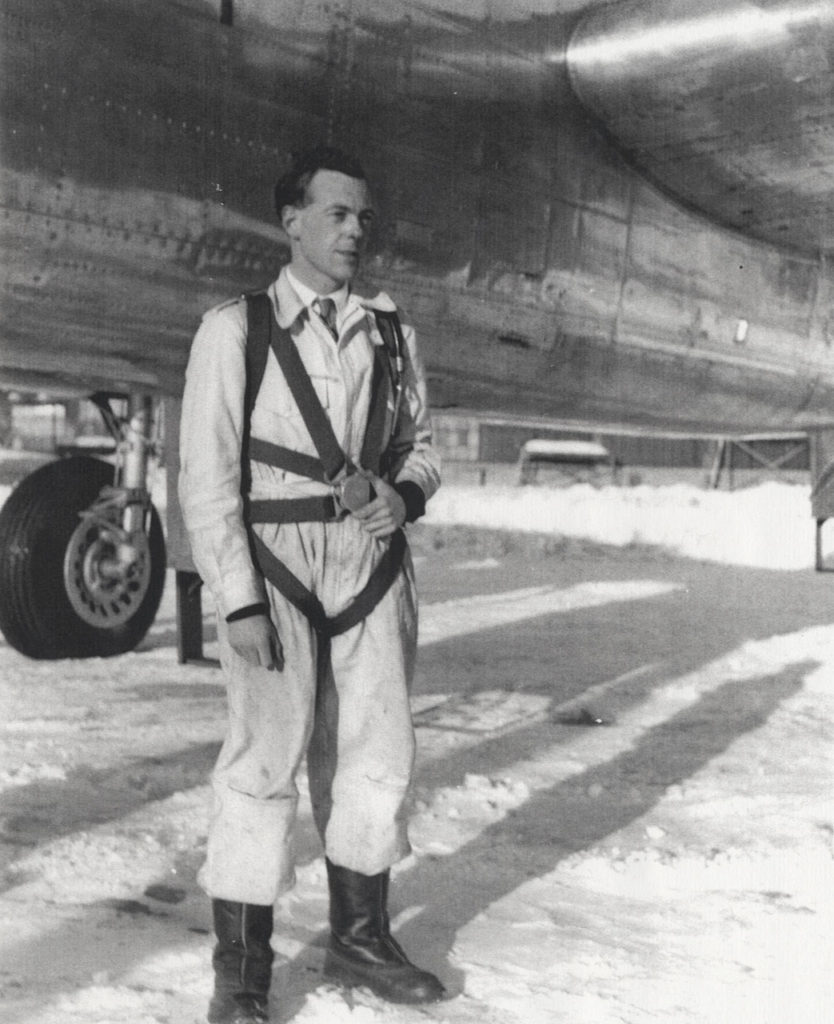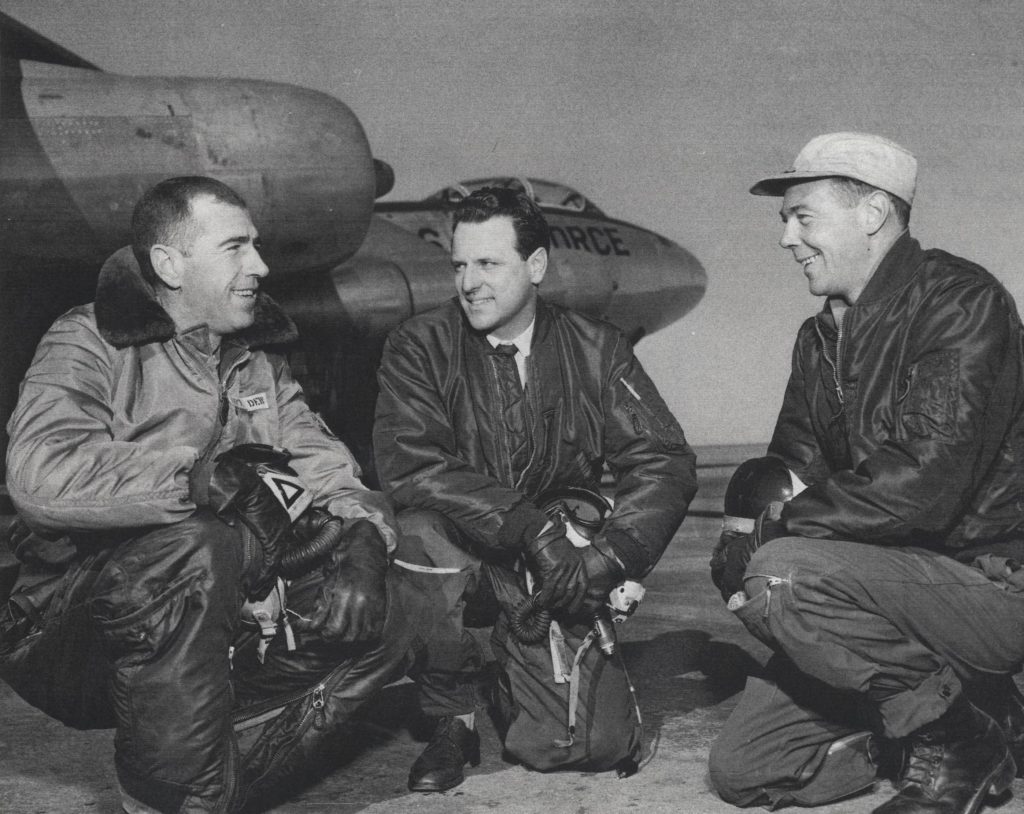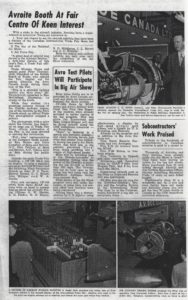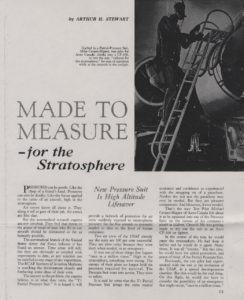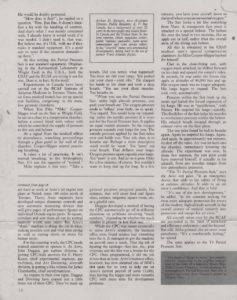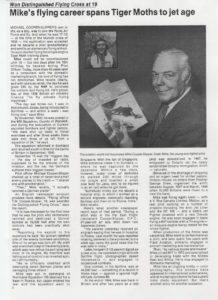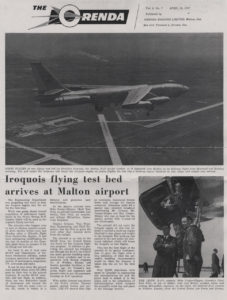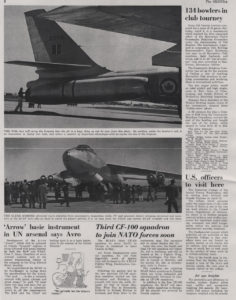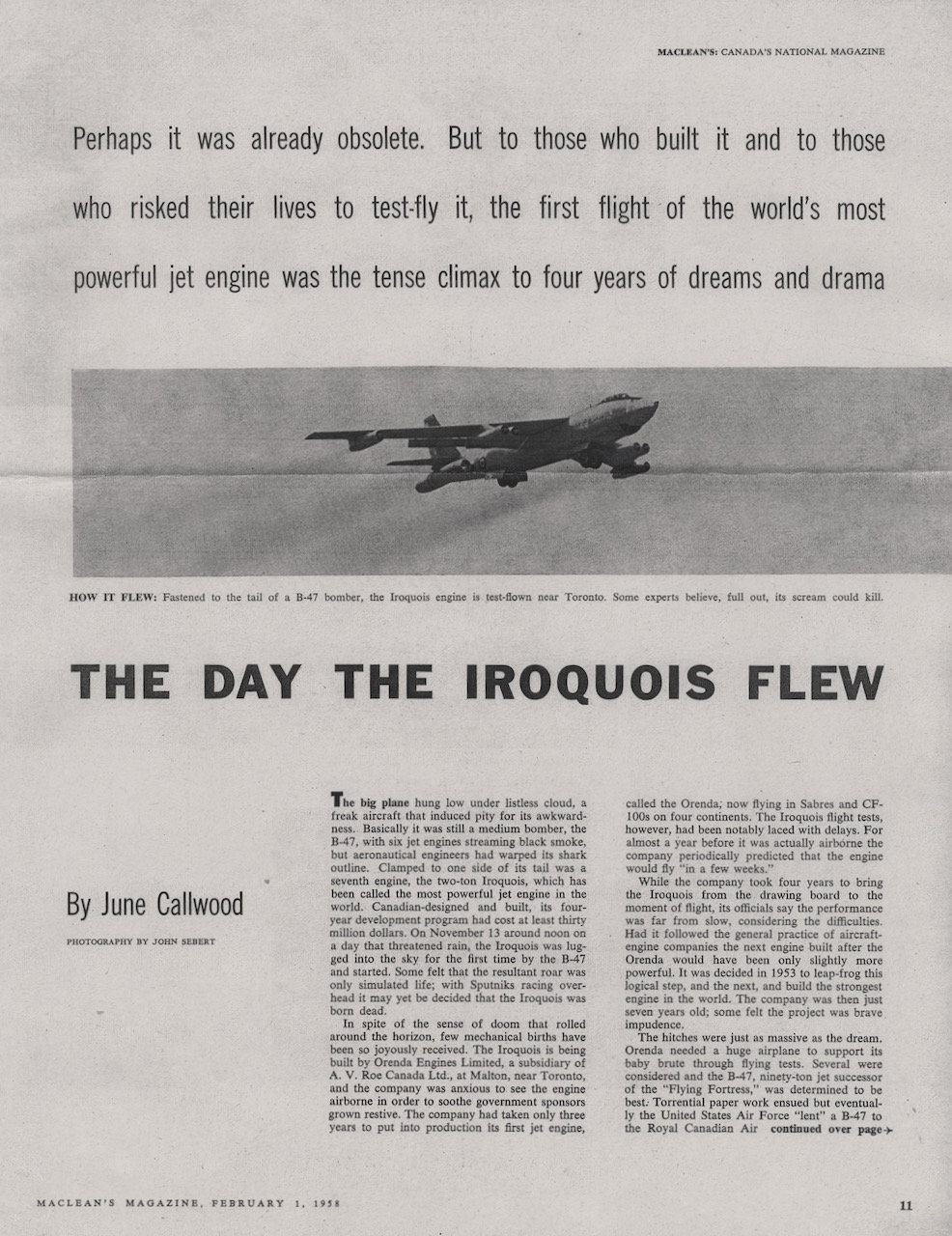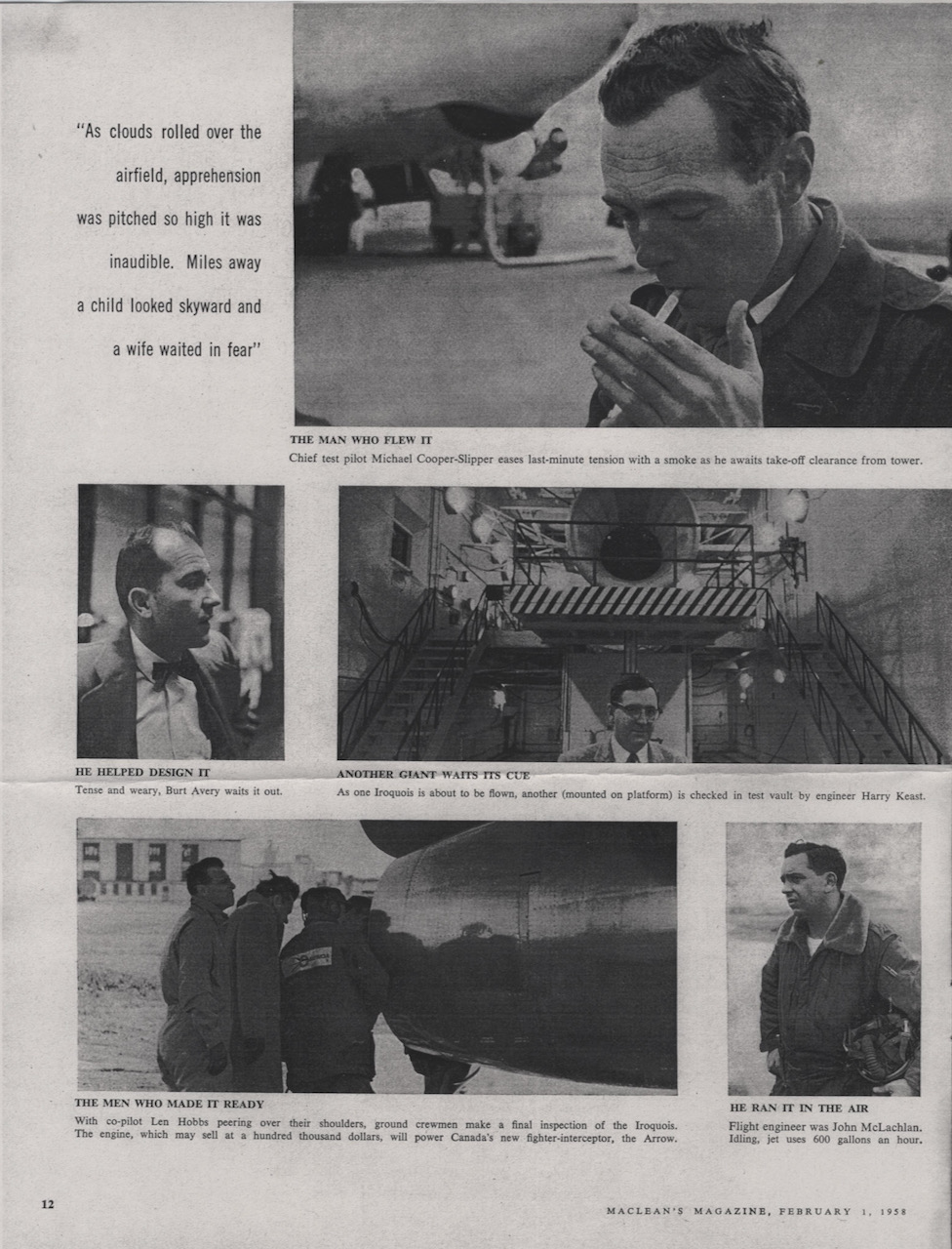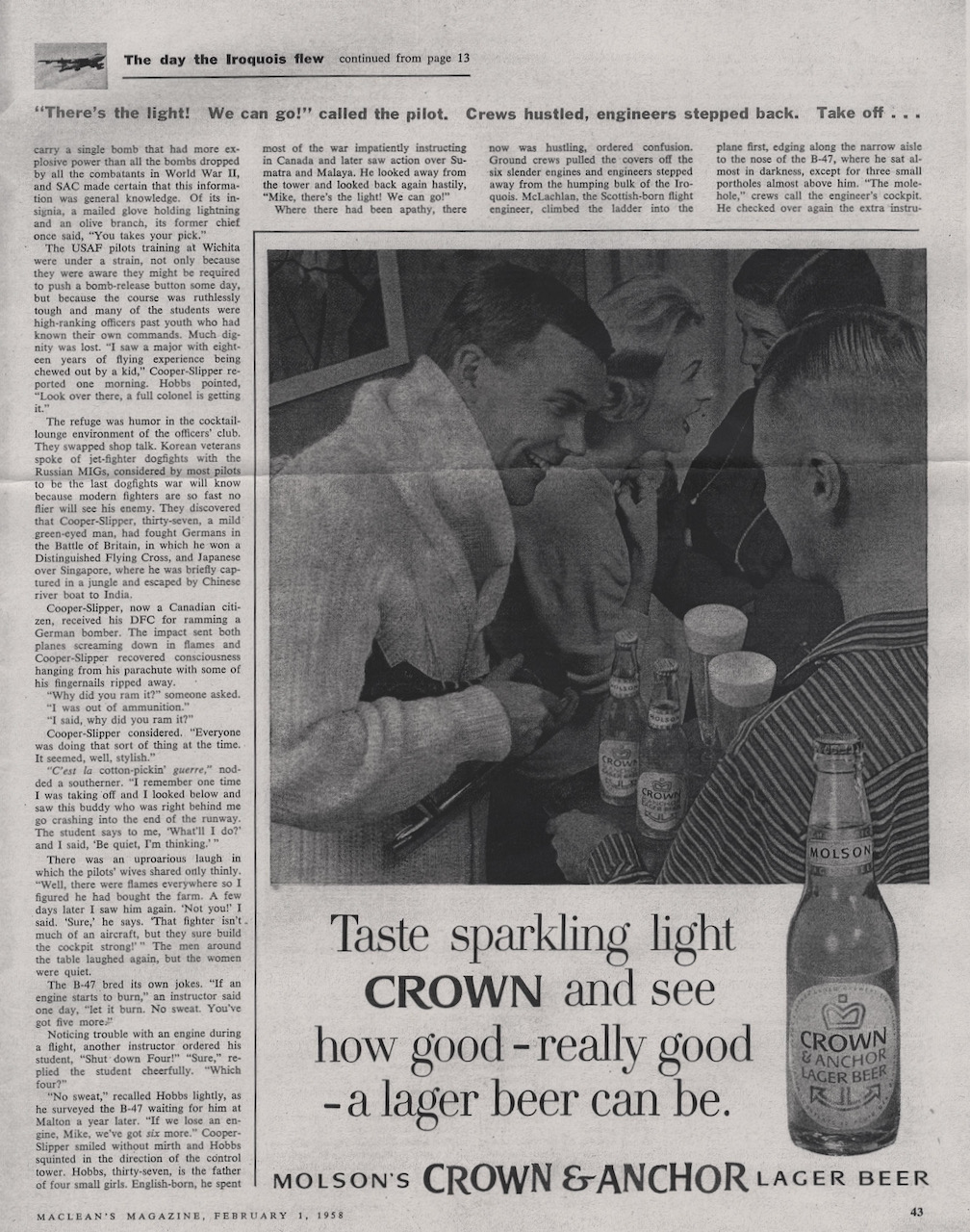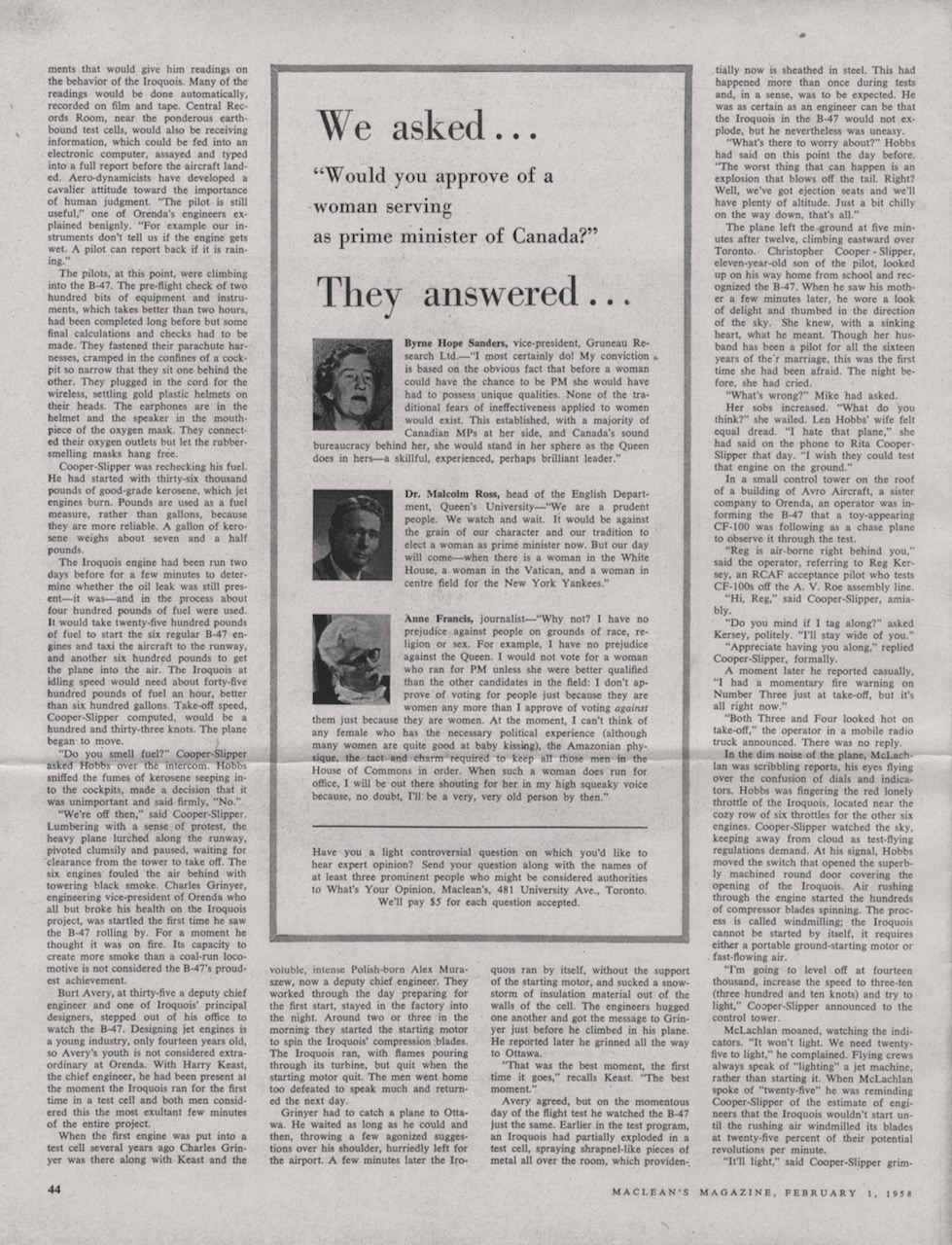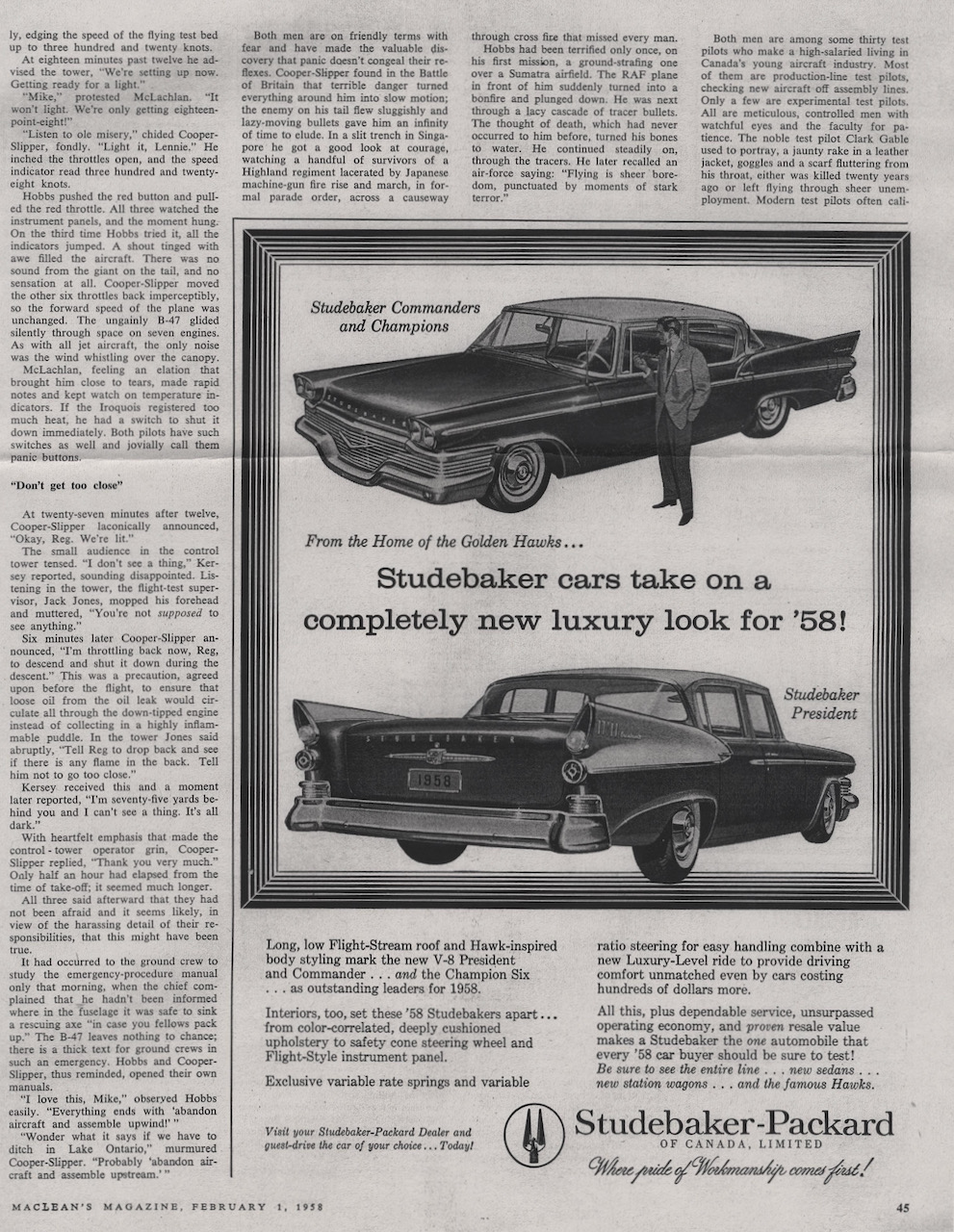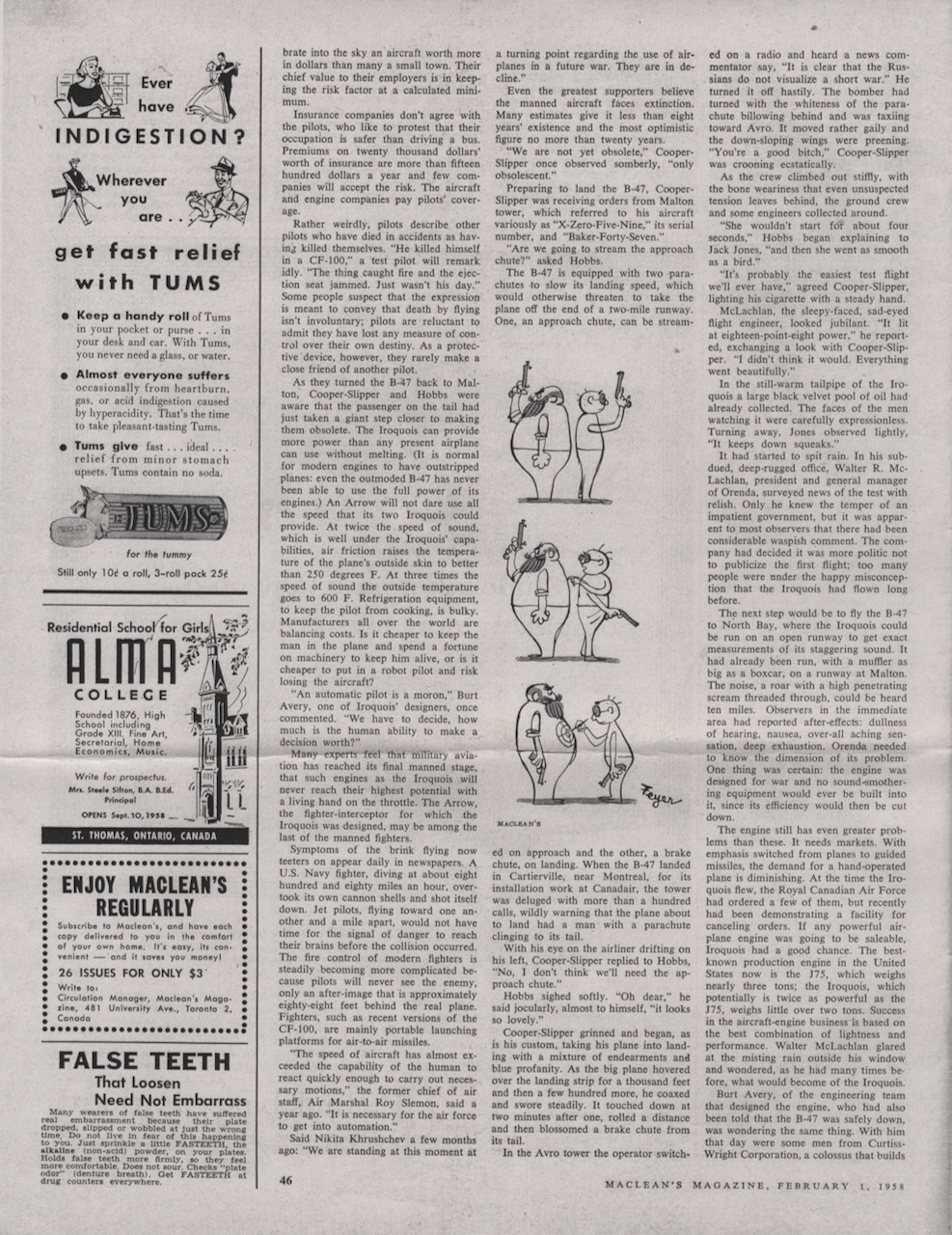T.P.M. Cooper-Slipper
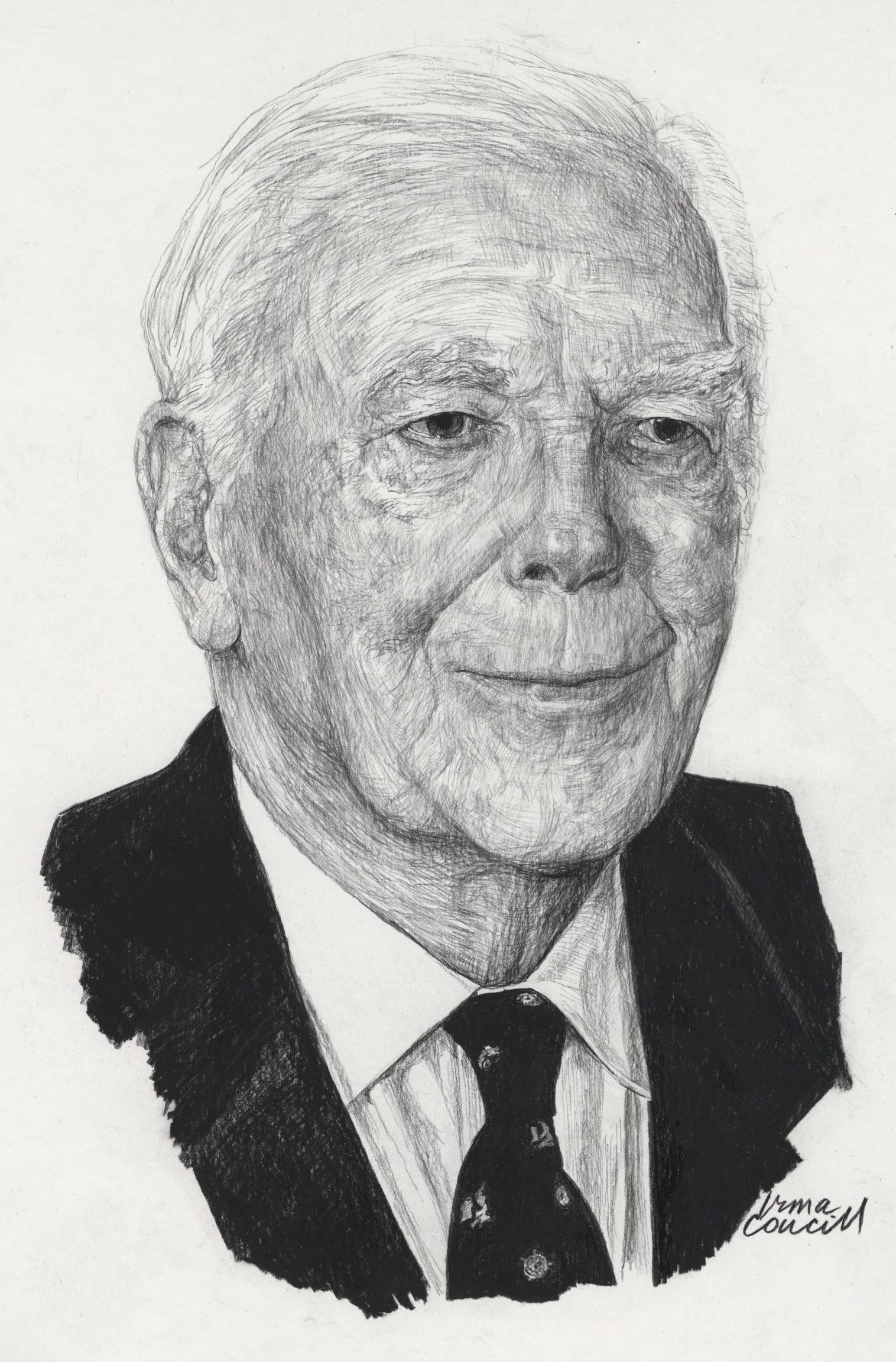
Nickname: Mike
Birth Date: January 11, 1921
Birthplace: Kinver, Staffordshire, England
Death Date: February 23, 2004
Year Inducted: 2003
Awards: DFC
His accomplishments in his military career, his exceptional courage and capabilities as a test pilot of both aircraft and engines, and his expertise in marketing, helped to establish Canada's reputation as a leader in aviation
Life in England
T.P.M. (Mike) Cooper-Slipper, D.F.C., was born in Kinver, Staffordshire, England on January 11, 1921. He joined the Royal Air Force (RAF) in 1938 and completed his training as a fighter pilot in 1939. He was posted to No. 605 Squadron at Wick, northern Scotland. The Squadron was moved in May 1940 to cover the evacuation of Dunkirk. He flew every one of the Squadron's sorties before it was withdrawn from action. He was promoted to Flying Officer and moved to Croydon at the height of the Battle of Britain. On September 15, 1940 he rammed a Dornier 17 bomber with his disabled Hurricane and was awarded the Distinguished Flying Cross, at age 19 one of the youngest Battle of Britain pilots so honoured.
Following instructor's training, again finishing near the top of his class, Cooper-Slipper became Flight Commander of No. 74 Squadron in October 1941, then was given command of No. 135 Fighter Squadron, which he took to Singapore. He flew two Hurricane sorties out of Palembang, Sumatra, but was captured by the Japanese. He escaped and made his way to Cairo, Egypt. In November 1942 he was appointed Officer Commanding Special Performance Flight, Aboukir, and chief test pilot of No. 103 Maintenance Unit (MU). Here, he tested modified Spitfires, taking one to 44,100 ft (13,411 m), aimed at stopping photo reconnaissance by German aircraft.
In February 1943 he was posted to the Middle East Communications Squadron and from May 1944 to June 1946 was test pilot for various MU's in the Middle East and England. He was promoted to Squadron Leader in July 1944. Assigned to test repaired aircraft, he flew the full spectrum of aircraft from Tiger Moths to B-24 Liberators.
He resigned from the RAF in June 1946, having served in three theatres of conflict. He had an enviable record of 14 enemy aircraft confirmed shot down, shared or damaged.
Moving to Canada
Cooper-Slipper emigrated to Canada in 1947, joining Avro Canada Ltd. He was appointed to work with Donald Rogers, doing post-repair and production testing on the four-engine Lancasters, twin-engine Mitchell B-25's and Sea Furys being modified for peacetime service.
In 1949 Cooper-Slipper was assigned to development of the Avro Jetliner. In April,1950 he crewed the first international jet transport flight, along with chief test-pilot Rogers and Bill Baker as engineer, from Toronto to New York. The flight, a two-hour trip in a conventional commercial aircraft, was completed in 59 minutes. He was captain on the return flight. Although the Avro Jetliner never went into production, the widespread interest in its design put the spotlight on Canada as a leader in the development of this new sector of the aviation industry.
When the Avro 'Jetliner' was being developed there was widespread reluctance to consider jet aircraft for civilian transport. Many believe that flying such fast aircraft on commercial routes would be beyond the capabilities of the pilots and therefore dangerous, that tarmacs would be melted by the heat of the jet engines, and that jets would not be able to compete with conventional aircraft on short-haul commercial runs.
On a test flight between London and Toronto, the 'Jetliner' achieved speeds exceeding 500 mph (804 kph), a record for those days. Handling the aircraft posed no problem for its experienced pilots, When Cooper-Slipper took the 'Jetliner' to Montreal's Dorval Airport for a series of accelerate-stop tests, the airport manager had fire trucks follow the plane to put out the expected fires. There were no fires! The 'Jetliner' had exploded those myths one after the other.
Transfer to Orenda Engines
In 1951 Cooper-Slipper was loaned to Orenda Engines, the gas turbine division of Avro, for engine development work. He subsequently test-flew the Canadair-built Orenda-powered F-86 Sabre and the Avro CF-100 'Canuck', the first jet fighter designed and built in Canada. The Orenda engine revolutionized the Sabre, providing 7,200 Ib. thrust, versus 5,400 Ib. thrust from the original J-47, a difference of 33% more power. The twin engine CF-100 became operational in April 1953, and served ten years in NORAD and NATO squadrons, contributing significantly to Canada's role in international defence.
Orenda Engines separated from Avro in 1956 and Cooper-Slipper became their chief test pilot. Most notable was his work on the development of the Iroquois turbojet engine, intended to become the power plant for the CF-105 (Avro Arrow). Test flights had indicated that, with the right engine, the Arrow could become the world's fastest, most advanced interceptor aircraft.
The Iroquois Turbo-Jet Engine
The Iroquois, delivering over 19,350 Ib. of thrust during testing, was too large and powerful for most aircraft of the day, so when the time came to air-test it, the U.S. Air Force agreed to lend a Boeing B-47 bomber for a flying test-bed. In the fall of 1955, Cooper-Slipper and two other Avro-Orenda personnel took 10 weeks training at the USAF Strategic Air Command Training Base near Wichita, Kansas, emerging as a fully qualified B-47 crew, with Cooper-Slipper qualified as S.A.C. Commander, a notable achievement for a civilian test pilot.
The B-47 was modified by Canadair to carry the Iroquois as a seventh engine, mounted on the rear of the aircraft, and flight testing began. They flew the B-47/CL-52 from Canadair's Cartierville plant to Malton on April 15, 1957. The modified B-47 was a challenge to fly. At full throttle, the Iroquois engine was too powerful even for the B-47. Cooper-Slipper's crew had to develop a unique method of staggered engine thrust on the B-47's six engines when the Iroquois was running to prevent a severe asymmetric thrust condition. A total of 31 hours of in-flight testing was completed before the Avro Arrow program was cancelled.
New Opportunities
During his employment at Avro and Orenda, Cooper-Slipper demonstrated an aptitude for selling aircraft as well as flying them. In 1961, he joined de Havilland Aircraft of Canada (DHC) as a Technical Sales Representative. DHC's design program was shaped in part by his market research. Of particular note was the research he did for the 19-passenger Twin Otter, which used floats, skis, or wheels, and could be operated in extreme conditions. Its turboprop engines gave it greater speed and larger passenger and freight capacity, making it useful to commercial airlines for feeder routes and air taxi service.
In 1964 Cooper-Slipper became Marketing Manager for Field Aviation. While his responsibilities at Field were market research and general marketing of airplanes, his most significant contribution was to their water bomber program. He photographed the water drops from the ground, providing information that was used to adjust the delivery system for maximum effectiveness in fire suppression. Field Aviation became a world leader in this market.
In 1969 he moved to a sales position at Bannock Aerospace, buying and selling used aircraft, mostly Beavers, Otters and Caribous, primarily to private consortiums.
Experience in market research, sales and working with consortiums were a distinct advantage when Cooper-Slipper was hired as Overseas Market Consultant with the Ontario Ministry of Industry, Trade and Commerce in 1971.
By the mid to late 1970's he led missions to the big air shows in Europe, concentrating more and more on identifying markets not just for Canadian-built aircraft, but aircraft parts and components. Cooper-Slipper's last project was the formation of a five-member Ontario based consortium to market aerospace products and services internationally. He retired in 1986 and died at age 83 in Victoria, BC on February 23, 2004.
Mike Cooper-Slipper was inducted as a Member of Canada's Aviation Hall of Fame in 2003 at a ceremony held in Halifax, Nova Scotia.
News Stories
To return to the Inductee Page, please click here.

